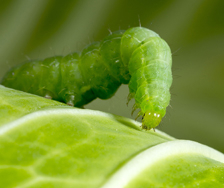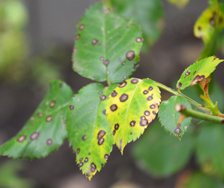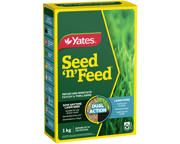Yates Account
Join now
Create a Yates account today!
Sign up to join the Yates Garden Club for monthly e-mails packed with seasonal inspiration, tips for success & exclusive promotions.
Plus if you’re a Garden Club member you can take part in the Yates Growing Community - a blog to share successes, get advice & win prizes in fun challenges along the way!

Forgot password
Enter the email address associated with your account, and we'll email you a new password.

There's a dry summer ahead of us, with lots of wear & tear from happy feet and paws. Your lawn will benefit some TLC to get it into peak condition before then. Feeding and fixing now, in spring, will make your lawn much more resilient during the hottest months.
Easy steps to fortify your lawn against summer stress:
1. Feed Generously
Healthy, well fed lawns are tough lawns, so fertilising in late spring is great preparation for summer. If your lawn started the season off in rough shape, a feed at the end of spring is a great idea, even if you already fed it back in September.
Why feed, you ask? When you feed your lawn, you’re actually feeding the soil microbes: they respond by breaking down fertiliser into a form that lawn grass can absorb. Keeping your soil microbes happy is the secret to a good lawn, because they're feeding the grass for you. As soil temperature rises and everything begins to speed up, grass nutrition can accelerate, because most of the nitrogen in slow-release fertilisers is 'unlocked' for grass by soil microbes.
Yates Dynamic Lifter Organic Lawn Food combines composted chicken manure, blood & bone, fish and seaweed - it's ideal to enrich the structure of the soil. This rich organic content encourages earthworms and beneficial soil micro-organisms, that in turn help to improve the soils porosity (drainage) and air movement. This all makes it easier for your lawn to grow and root deeper into the soil.
Yates Lawn Fertiliser Quarterly is a clever granular lawn food that combines the benefits of both fast-acting and gradually released nitrogen: the fast release component provides rapid results in 7 days, while the slow release feeds over a prolonged 12 week period.

2. Deep Watering is Better
As the weather (and soil) begins to warm up and dry out, lawns benefit from being watered deeply once or twice a week, rather than relying on frequent light waterings from rain showers. Deep watering encourages grass roots to penetrate deeper into the soil, which gives grass better access to moisture during hot, dry conditions.
3. Fix Bare Spots
Bare patches in the lawn are a magnet for weeds to establish, along with spoiling the look of the lawn. Repair patches in the first half of November with Yates Seed'n'Feed, so the patches will green up by Christmas and won’t encourage weeds.
To fix patches, first remove any weeds or dead grass from the patch. Gently cultivate the soil in the bare patch with a rake or garden fork to create a soft, loose surface. You can also spread some handfuls of lawn mix over the patch. Broadcast seed evenly over the whole patch. Gently rake the area to mix the seed into the softened topsoil. Then lightly cover the sowed seeds with potting mix or lawn mix.
Water regularly for a few weeks until the grass is established. During the first few days of germination, make sure you don't let the seed dry out, at all. Allowing the soil to dry out even for a short time can halt germination and kill delicate embryonic grass. It's likely you'll need to water multiple times a day during the first few days, then continue to keep a close eye on the moisture after that.

4. Control Weeds
Tidy up any broadleaf weeds (like dandelions, clover and thistles) growing in the lawn, which can ruin the aesthetics and be painfully prickly. Yates Weed n Feed is available in an easy to use hose-on application or in concentrate form, for dilution in a watering can or garden sprayer. Yates Weed n Feed Hose On will also give the lawn a quick burst of nutrients to promote rapid green growth. It's ideal for cool-season grass types like fine fescue, tall fescue, perennial ryegrass and bent/browntop. You can find our tips for getting the best out of Weed'n'Feed here: Weed'n'Feed FAQs.
A word of warning though, if you're oversowing grass seed it pays to time your weedkiller applications carefully. Selective lawn weedkillers can affect the germination rate of grass seed, if you sow too soon after you've applied weedkiller. The rule of thumb is to wait for 4-5 weeks after using lawn weedkiller, before you sow grass seed onto the treated area. This ensures you get peak grass germination and excellent results from your hard work.
If you aren't oversowing, the job is much more straightforward. If you didn't get onto the weeds back in autumn, it's not too late, but make sure you move fast! Many weeds will be starting to flower and set seed; these seeds will happily germinate in your lawn next autumn. If you control them now before they have a chance to set seed, next season will be much easier to manage.

5. Mowing Tips
If you've been leaving your lawn longer over the winter, don't cut it savagely short when spring arrives; this can stress the grass and hold back growth during the spring season. For the first cut, don't cut more than a third off its length....just a slight trim is best. Wait until the soil warms up and grass is noticeably growing before you cut it. After that, the trick is to cut as frequently as possible, but remove as little growth as possible during each mow.
For established lawns, cut cool season grasses (e.g. ryegrass, fine fescue, tall fescue or browntop) to between 3cm and 10cm, and cut warm season grasses (e.g. kikuyu or couch) shorter, to 2.5cm high. Keeping the grass long allows for more photosynthesis, to really get the lawn cranking. However, during a very wet spring shorter is better, to discourage lawn diseases.
If you aren't sure what type of grass you have, in NZ it’s likely that your lawn will be a cool season blend. Usually, warm season grasses are found in coastal areas, or in the warmest parts of the country.

6. Prevent Insect Pests
Late spring is an ideal opportunity to head off grass grubs and porina, because the adults are flying and laying eggs this month. If you've had insect damage this winter, it's probably still looking quite disastrous. It's too late to fix last season's damage, but you can certainly prevent it happening next year. Pro tip: Keeping your lawn strong and healthy really helps it to resist pest pressure.
Adult grass grub beetles are attracted to light, it’s quite common during the second half of spring to see beetles buzzing around street lighting. If your outdoor lighting is close to your lawn area, avoid leaving it on for extended periods in spring, so it doesn't act as a welcoming airport runway for beetles.
Nocturnal porina moths fly in large waves during spring and autumn, laying thousands of eggs during their very short lives. Damage from last autumn's caterpillars will have eased off by now, but the caterpillars from the moths that are flying now, will start to hatch out in mid-summer and begin digging burrows, that appear as small holes in the soil. The pasty-looking caterpillars pop out at night to eat surrounding grass blades. They'll reach voracious full size next winter, which is why the worst porina damage appears during the cold season.
The good news? We have a really effective solution for both of these destructive pests (it controls lots of other pests too). Yates Lawn Grub and Porina Kill + Protect delivers excellent preventative control against grubs and caterpillars. It continues to perform after application, giving you up to 6 months protection. Stop grubs and caterpillars before they even get started!

















Share
Share this article on social media